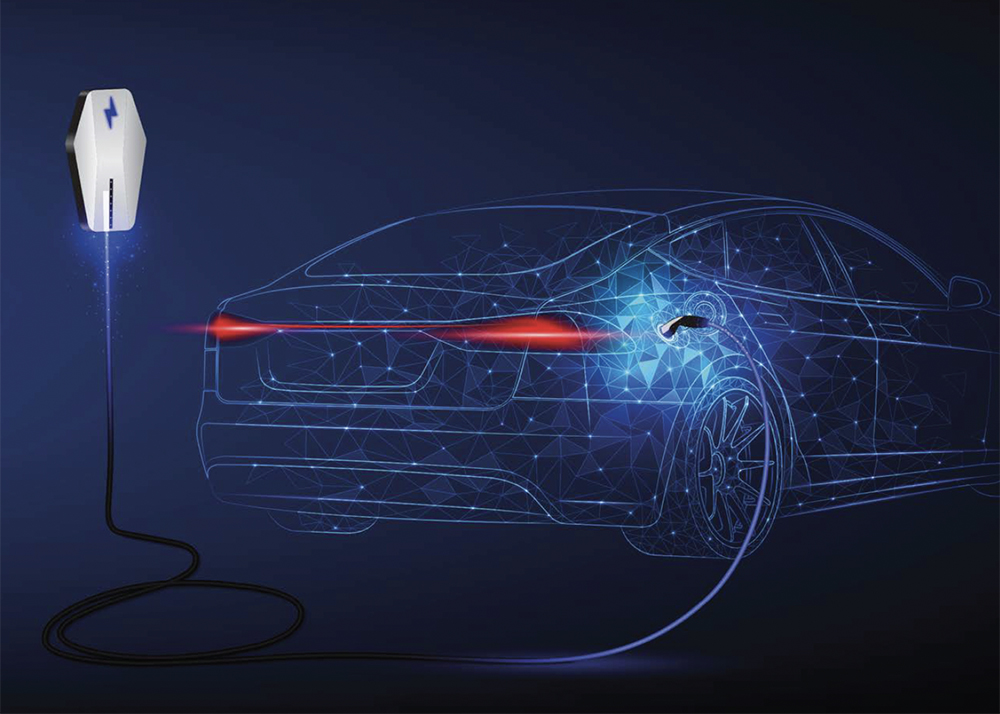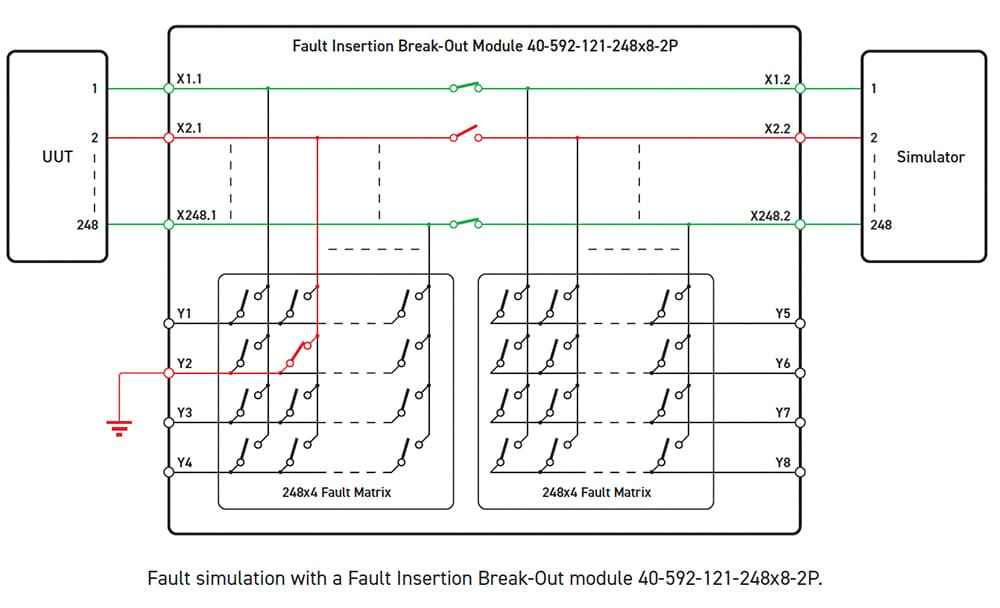
Sponsored by Pickering Interfaces.
The following energy structure of selection for EVs is 800 V, which requires parts to be suitably rated and extra sturdy than their 400 V counterparts. Nevertheless, most check tools used for 400 V EV system growth could be re-used for 800 V if it will possibly deal with the upper voltages, making the transition simpler for EV builders.
Obtain the white paper for additional info
The Advantages of {Hardware}-in-the-Loop and Simulation
In EV growth, many corporations use {Hardware}-in-the-Loop (HIL) Simulation as a part of a test-driven technique. HIL simulation permits {hardware}, comparable to a Battery Administration System (BMS), to work together with a simulated atmosphere that mimics real-world circumstances, together with bodily components like temperature and dynamic circumstances like movement and vibration. This helps engineers observe system conduct underneath real looking situations.
Simulating these real-world circumstances permits early identification of design flaws and weaknesses, permitting for well timed enhancements and avoiding expensive points later in growth. A key benefit of simulation in EV growth is the power to soundly create excessive fault circumstances—comparable to speedy discharging and brief circuits—to guage BMS conduct with out risking harm to precise battery packs.
Making a HIL Take a look at Platform
Whereas a HIL check platform may very well be created from scratch, the price (each financial and time) of doing so tends to be prohibitive within the automotive {industry}. Due to this fact, the usage of an industry-standard platform is extremely beneficial. Two requirements to think about are PXI and LXI, that are primarily based on the PCI and Ethernet {industry} requirements, respectively.
Each are supported by numerous world distributors with many business off-the-shelf merchandise accessible. Each present seamless vendor-independent plug-and-play. Of nice profit is that product longevity is assured, and the distributors have obsolescence administration processes in place.
400 to 800 V Testing Migration Path
Many OEMs and methods homes within the automotive sector have invested in growth and verification tools, together with HILS methods, for EVs. The excellent news for these utilizing PXI or LXI platforms is that many present modules will nonetheless be usable when transitioning from a 400 V to an 800 V structure, permitting for vital reuse of the check system.
For parts that want alternative as a consequence of larger voltage rankings, PXI and LXI’s modularity and scalability make it simple to swap them out for upgraded variations.
Under, we talk about a number of Pickering Interfaces merchandise appropriate to be used in 800V architectures.
Battery Cell Simulation
Cell-level simulation is important for EV growth, because it permits the Battery Administration System (BMS) to acknowledge a totally charged pack precisely. This requires simulating particular person 3.2 to three.7 V cells and stacking them to realize the required voltage—96 cells for 400 V and 192 cells for 800 V.
The BMS additionally manages cell balancing, necessitating the power to simulate every cell’s cost degree throughout relaxation, charging, discharging, and introducing imbalances.
By simulating cells independently, present tools could be tailored for 400 V and 800 V architectures by including extra modules (simulated cells) so long as the emulator can deal with larger voltages.
Determine 2 exhibits the block diagram of a multi-channel battery simulator module accessible in PXI (41-752A) and PXIe (43-752A). It includes a number of energy provide channels (two, 4 or six per slot) able to supplying as much as 7V and 300mA, that are remoted from each other and from system floor. Due to this fact, the module’s energy provides can be utilized to emulate a stack of battery cells. Additionally, every channel can sink as much as 300mA to emulate a battery underneath cost. Every channel gives unbiased energy and sense connections, permitting the simulator to sense a distant load and proper for wiring losses.

Excessive Voltage Switching
Excessive voltage switching is utilized in check methods for connecting or disconnecting alerts and routing them between factors, achieved by means of three configurations:
- Uncommitted switches (e.g., single-pole, single-throw, usually open or closed).
- Matrices that join any enter to any output.
- Multiplexers (MUXs) that join a single enter to a number of outputs.
These configurations are available in varied relay and connection counts, with modules able to switching a number of kV, making them appropriate for purposes like isolation switching and breaker simulation.
Excessive-voltage switching could be achieved utilizing a number of options from Pickering Interfaces: over 60 PXI/PXIe modules and 28 LXI modules. For instance, the 40-323-901 (PXI) and 42-323-901 (PXIe) are 14xSPST relay modules appropriate for high-voltage energy switching purposes. They’ll deal with present as much as 0.25 A for chilly switching as much as 9 kVDC (9 kVAC peak) and for decent switching as much as 7.5 kVDC (7.5 kVAC peak).
RTD Simulation
Temperature have to be monitored at varied areas in an EV, together with the battery pack, motors, energy inverter, charger port, and cabin. A preferred and cost-effective possibility is the resistance temperature detector (RTD), with the PT100 being a typical sort with a resistance of 100Ω at 0°C. RTDs can have both a constructive or detrimental temperature coefficient (PTC or NTC).
Simulating RTDs is helpful since testing the design underneath a variety of temperatures would in any other case require costly environmental check chambers.
PXI-based RTD simulator modules can be found from a number of corporations. For instance, Pickering Interfaces has many appropriate modules for RTD simulation, together with the 40-263 (with 4, 8, 12, 16, 20 and 24 channels) that may simulate the resistance vary 40 to 900Ω, which equates to a temperature vary of -150 to 850oC, to a decision of lower than 10mΩ. Determine 3 exhibits an instance module.
To a lesser diploma, thermocouples are additionally utilized in EVs, primarily in product growth, as a consequence of their excessive accuracy. Their outputs, that are small voltages (a number of millivolts), could be simulated. Pickering Interfaces gives PXI millivolt thermocouple simulator modules with 8, 16, 24, or 32 channels, offering extremely correct low-voltage sources. Every channel can function throughout three voltage ranges to simulate any customary thermocouple sort used within the {industry}.
Fault Insertion/Injection
The flexibility to insert faults throughout system growth and verification is important. As talked about above, methods may must instigate a secure shutdown or, if redundancy is in-built, energy re-routed if a fault is detected. This performance must be totally validated.
Pickering Interfaces’ vary of PXI fault insertion items is explicitly designed for safety-critical purposes the place the conduct of a management system, comparable to a BMS, must be totally evaluated underneath all potential real-world fault circumstances.
For instance, the 40-592 fault insertion break-out (FIBO) is a large-scale, high-density switching matrix. It’s one in all a spread of modules designed for purposes requiring the simulation of quite a lot of faults in advanced designs with a excessive variety of alerts/connections, comparable to a battery pack.
Open circuits and brief circuits (to a different sign/part or to the bottom) are typical faults that may be simulated.

Abstract
Transferring from 400 to 800 V architectures gives advantages like larger efficiency and sooner charging. Nevertheless, it requires better sturdiness and security. Simulation is the most secure method to confirm an EV’s structure and methods, permitting for straightforward check circumstances and outcomes traceability. Utilizing PXI and LXI-based check tools gives producers with a straightforward migration path. This allows optimizing key system parts and accelerates system growth by means of automated testing.


